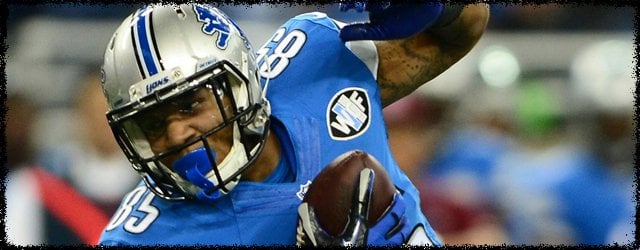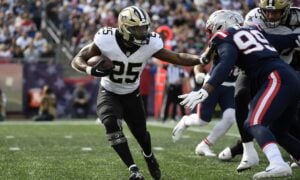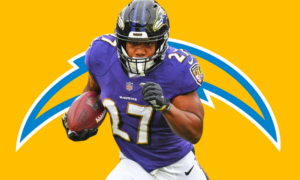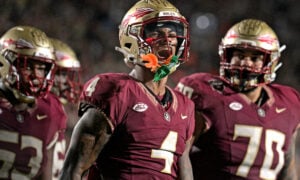Rookie Investments: Part Two

I recently introduced mini-series entitled Rookie Investments, based on the idea that rookies will nearly always maintain or increase their value over the players’ first year in the league. After covering the overall data I collected on the 2013 and 2014 rookie classes, today I want to go a bit deeper into the data, beginning with a look at the two separate draft classes.
As a reminder, here is the complete set of data collected for this study:

[am4show have=’g1;’ guest_error=’sub_message’ user_error=’sub_message’ ]
2013 Rookie Class

- The numbers across the board for the class of 2013 are very similar to the full two year total.
- Nearly one-third of the 2013 rookies lost value based on the 2014 startup mock drafts, but only ten lost significant value. Remember, that means a fall of more than 12 draft picks in startup drafts.
- Of those ten players, none were top 100 selections and only one was chosen in the top 150, Marcus Lattimore. Of course, we know Lattimore never fully recovered from the horrific knee injury he suffered in college, which decimated his dynasty value.
- Although the class of 2013 was not as heralded as the 2014 group, they held their value in a similar fashion. This goes to show us that nearly any group of rookies will be able to maintain their original dynasty value one season into their career.
- Of the ten players who lost significant value, only one, Jets’ quarterback Geno Smith, saw consistent playing time during his rookie season. This is a good example of how the value of a rookie quarterback can fluctuate quickly. When highly ranked quarterbacks enter the league, they are often quickly ranked and drafted among the top 12 quarterbacks in dynasty leagues, as is the case this year with Jameis Winston and Marcus Mariota. When those players falter their rookie year, their value falls through the floor. Sometimes, we give up on these quarterbacks too early, though that does not look to be the case with Smith.
- While only ten players lost significant value, more than three times that number, 33, gained significant value from 2013 to 2014. Among the biggest risers were Jordan Reed (+148), Kenny Stills (+117), Zac Stacy (+114), Andre Ellington (+113) Terrance Williams (+110) and Khiry Robinson (+102). As rookies who were not highly drafted entering the league, so they had plenty of room to grow. This is a small sample size and may just be a coincidence, but I am not surprised that most of these players have seen their value fall back closer to our original perception now that we have two years of game film. In fact, Stills is the only one who has seen his value increase again from 2014 drafts to 2015.
2013 Rookie Class: Two Years Later

- With the class of 2013, we have the luxury to look not only at the player value one year into their career, but two years as well. The picture we see is not nearly as rosy as the previous year’s data.
- Nearly half of the 2013 class lost some value two years into their career, as compared to only 29% after one season of play.
- The good news is that among those 30 players, nearly all were late round draft picks as they entered the league.
- Only two players, Montee Ball and Tavon Austin, were top 100 draft picks the off-season before their rookie season. This pair is also among the biggest fallers, as you might expect, each losing more than 70 spots in ADP since 2013. Ball in particular stings since he was a top 40 startup pick this time last year with the assumption he would take the Broncos’ running back job and flourish. Instead he flopped, and so has his value.
- Two years into their career, there are five players whose value has climbed by over 100 spots in ADP from 2013 to 2015. These players are Stills (+149), Travis Kelce (+134), Latavius Murray (+118), Khiry Robinson (+110) and Jordan Reed (+104). It’s clear to see Reed and Robinson are still living off their respective surprising play during their rookie year after both were somewhat disappointing in 2014. Meanwhile, Stills, Kelce and Murray all flashed their skills in small doses the past two seasons and continue to rise.
- This doesn’t show up when strictly looking at number of ADP spots gained, but the most impressive and most important increases in value belong to DeAndre Hopkins who has gone from an ADP of 86 in 2013 to 18 this season, and Le’Veon Bell, who has vaulted from 96 to 5. Both are top tier players and their percentage increase is the vital number.
2014 Rookie Class

- Although the 2014 rookie class has already been tabbed as one of the greatest in the league’s history, their overall numbers in the categories we are looking at here are not very different from their recent predecessors.
- Like the 2013 class, over half of the players drafted not only gained value, but gained significant value of more than one round in startup drafts.
- As you might expect, the top gainers according to ADP are players who were being drafted in the second and third rounds of rookie drafts, or the later rounds of startup drafts this time last year.
- The top risers include: Jerick McKinnon (+123), John Brown (+117), Martavis Bryant (+105), and Jarvis Landry (+101). These players’ value shift can be attributed to their surprisingly impressive play on the field, along with the rookie fever that has taken over much of the dynasty world.
- The number of players losing value, or specifically losing value, is nearly identical to the prior class. Also like the 2013 group, few, if any of the players losing value were top picks. None of the ten players who lost significant value were top 100 picks, with Ka’Deem Carey being the top drafted player to fall a round or more.
- Broadening the scope to all players who lost value adds Eric Ebron, Marqise Lee and Bishop Sankey to the list that were top 100 players prior to their rookie season and have now fallen. What’s really impressive though is those three, who all had very quiet, even disappointing rookie seasons, dropped less than a round in startup drafts.
Conclusions
The final point I just made is the crux of this research and this series of articles. Even players like Sankey and Ebron, both former first round dynasty rookie picks who greatly let down their fantasy owners, have maintained their value from year one to year two.
What can we do with this information?
First, it tells me rookies are indeed safe investments in both startup drafts and rookies drafts held in existing leagues. So, give me all the rookies I can get in any kind of draft and I know in most cases, I have a year to decide if this is a player I want on my roster, or if it’s time to move on.
Once you are a year into that player’s career, it’s time to make a decision, because we saw from the 2013 data, even more players are likely to fall off when it comes to dynasty value and owners’ expectations. Looking specifically at players like Ebron and Sankey – they could bounce back and have a nice year, which would likely boost their value and ADP in a major way, but if they struggle again, which is very possible, the dynasty community will not be as forgiving. This means if you want to get these players off your roster, now is the time.
[/am4show]
- Monday Mocks: 2024 Landing Spots - April 15, 2024
- Five Landing Spots That Would Tank Rookie WR Value - April 13, 2024
- Monday Mocks: 2024 Backup Quarterbacks - April 8, 2024


































































